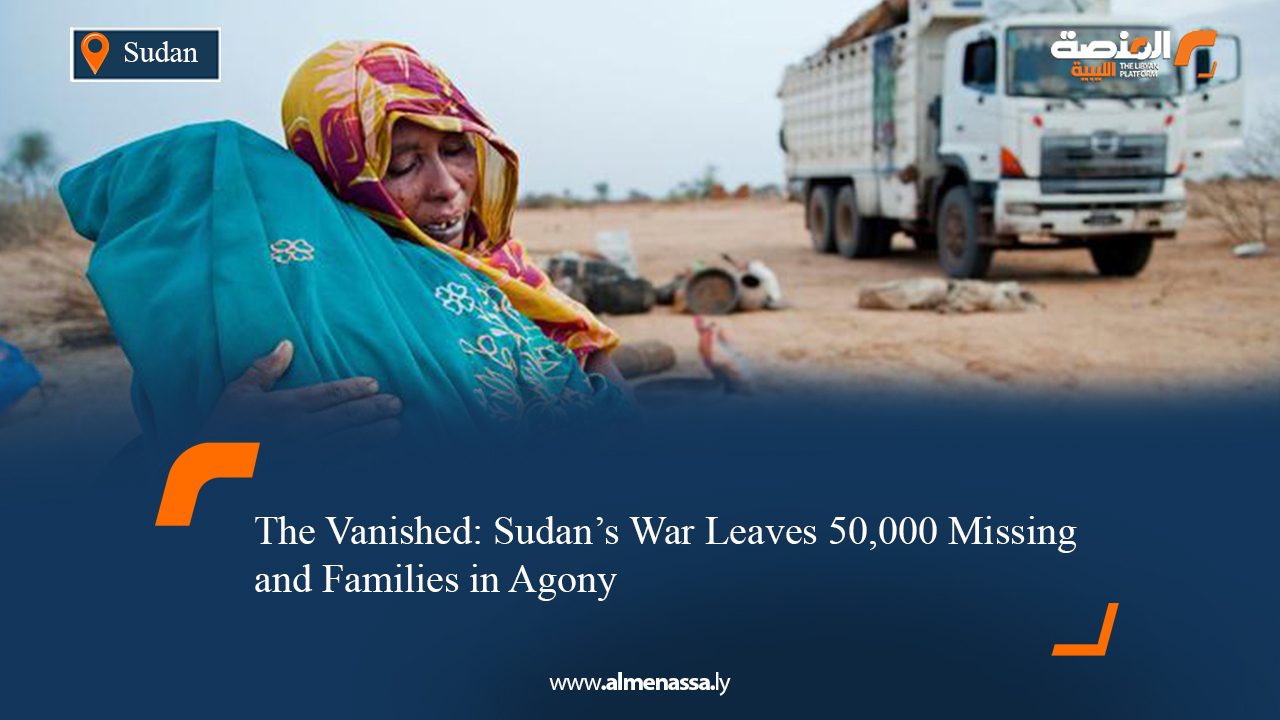Nearly three years into Sudan’s devastating conflict, more than 50,000 people have disappeared—many without a trace, many without a name. Behind each number is a family suspended in grief, searching for answers in a country where silence has become the loudest sound.
A Sister’s Story: Osman’s Disappearance and the Weight of Not Knowing
Sulafa still remembers the last time she saw her brother Osman. It was December 19, 2024, and a rocket had just struck their neighbors’ home in El Fasher, killing six members of the family. Osman, 42, a civil servant with the Ministry of Infrastructure and Urban Development in North Darfur, left the house to console the grieving family and visit his close friend—one of the victims’ sons—at the hospital.
After the visit, he told the family he was heading to his farm near the southern gate of El Fasher. Witnesses say he boarded a vehicle bound for the livestock market. From that moment, Osman vanished.
“He’s a father of two,” Sulafa says. “One of his daughters has never seen him. Her mother was pregnant when he disappeared.”
The family’s search began immediately. Rumors placed him in Zamzam camp, but exhaustive efforts yielded nothing. They scoured hospital records, checked lists of the wounded and dead, and contacted every possible authority. Osman always carried his ID and work badge—if he had died, they believed, someone would have found him.
But no one did.
A Family in Flight
Osman’s disappearance triggered a long and painful displacement. Sulafa’s family moved from Al-Usra neighborhood to Al-Qadi, then to a shelter at Timbasi School, onward to Al-Ittihad, and back again to Al-Qadi. They fled to Shuqra, returned to El Fasher, and eventually sought medical help for Sulafa’s ailing sister in Al-Dabba, Northern State. From there, they traveled to Omdurman, where she underwent surgery.
“We’re still chasing treatment,” Sulafa says. “But the emotional toll of Osman’s absence is heavier than any illness.”
Their mother, once strong and resilient, has deteriorated both physically and mentally. “He was closest to her,” Sulafa explains. “His absence broke her.”
A Pattern of Civilian Targeting
Sulafa’s story is not isolated. Her cousin and nephew, both civilians, were later confirmed detained by the Rapid Support Forces (RSF). Her 16-year-old nephew is among thousands reportedly held in unknown locations.
“Death brings closure,” she says. “But enforced disappearance is a slow torment. Families imagine the worst—torture, starvation, isolation—and live in constant dread.”
Ramy’s Search for His Uncle
Ramy Sami recounts the disappearance of his uncle Issam, a truck mechanic in his sixties, last seen in June 2025 after RSF seized control of the strategic border triangle between Libya, Egypt, and Sudan.
Issam had been working in the region when communication abruptly ceased. When Ramy tried calling his uncle’s phone, a stranger answered—refusing to provide any information before eventually going silent.
Issam suffers from diabetes and poor eyesight, and his family fears for his health. Despite appeals to gold mining communities across North Sudan, Libya, Egypt, and West Africa, no trace has been found.
“He left behind a family that depends on him,” Ramy says. “We’re terrified he’s being held without medical care.”
Legal Gaps and Institutional Paralysis
Human rights expert Mohamed Badawi links enforced disappearance in Sudan to cycles of armed conflict and authoritarian rule. Despite Sudan’s 2021 ratification of the International Convention on Enforced Disappearance, domestic laws remain riddled with loopholes—especially the requirement for prolonged absence before a case qualifies legally.
Efforts to address the crisis have faltered. The Siwak Committee (early 2000s), the 2020 Missing Persons Commission, and forensic investigations have all been hindered by political instability and limited capacity. The war that erupted in April 2023 has only deepened the crisis.
Badawi calls for harmonizing Sudanese law with international standards, establishing an independent investigative body, and empowering civil society and UN agencies to document and advocate. Crucially, he stresses that ending the war is a prerequisite for any meaningful progress.
Advocacy and Data: The “Missing” Initiative
Abeer Suleiman, spokesperson for the “Missing” initiative, estimates over 50,000 victims of enforced disappearance—though official figures remain elusive. Some have been released, others confirmed dead, but most remain unaccounted for.
She notes that many detainees are held by RSF in Nyala, accused of collaborating with the army. Among them are retirees, civilians, and military personnel. Women and girls were reportedly detained in Soba prison and Riyadh district during RSF’s control of the capital, as confirmed by former detainees.
Abeer urges humanitarian organizations to intensify efforts to locate the missing, especially in besieged areas like El Fasher.
A Nation Waiting
For families like Sulafa’s and Ramy’s, the pain of not knowing is relentless. The war has turned homes into shelters, neighbors into mourners, and loved ones into shadows.
Until the guns fall silent and the laws speak clearly, Sudan’s missing will remain a wound that refuses to heal


